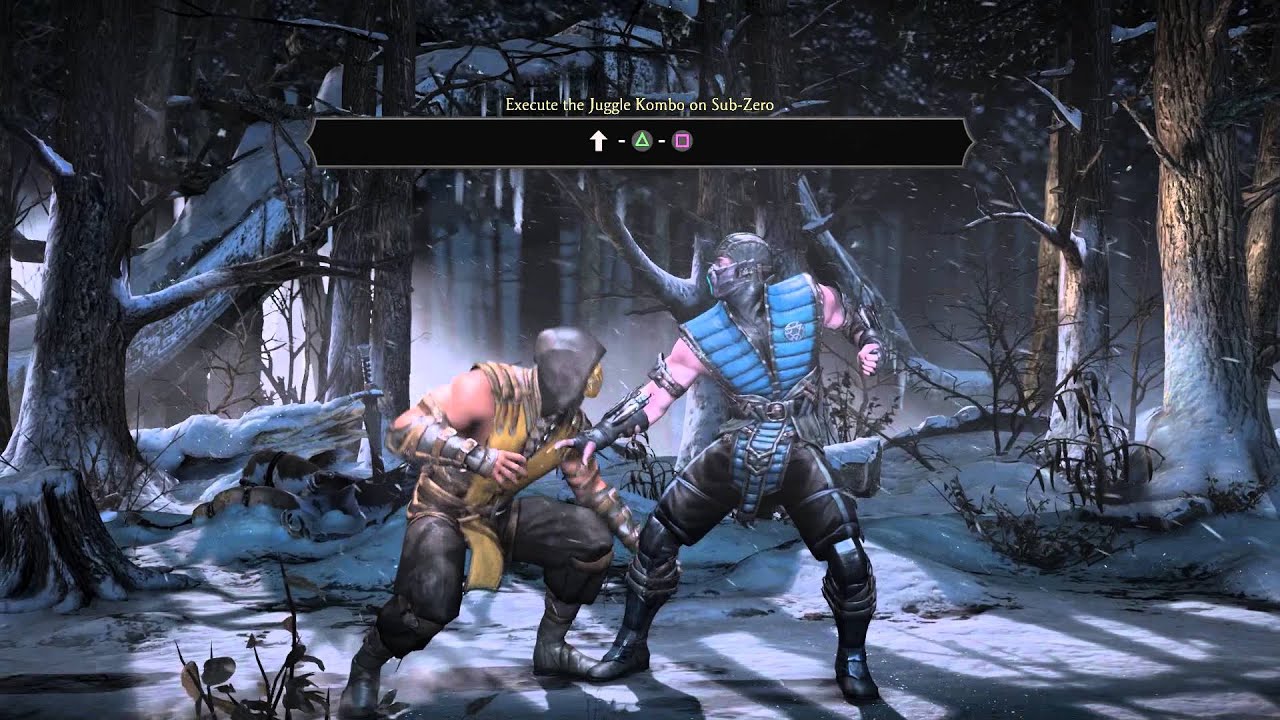The release of Mortal Kombat 11 promises to be not only an excellent entry in on of the most successful video game franchises of all time, but one of the best AAA titles of this generation. For those of you intimidated by fighting games, you’re not alone.
The transition from button-masher to expert combo executer is a tough journey, but one as satisfying as learning a new musical instrument or foreign language. Here are some fundamentals to help maximize your enjoyment both in the game and on the couch as you trash talk your friends and rivals.
Learn about frames
Every character in the game has specific moves that require time to execute (AKA Start-Up), have a window to connect (Active), and time to recover (Recovery).
For example, a front punch will do little damage, but its Start-Up could be 7 frames. Think 60 frames per second, 6 frames = 1/10th of a second. Pretty fast! Check out this video:
So you throw a front punch, you see the animation for the startup, and it connects. But what if you miss?
Well, recovery frames detail how long you will be vulnerable for. The bigger the move, the longer the recovery.
If you whiff a front punch, it’s safer to block or react to what your opponent might do. If you whiff a heavy kick or a special move, you are left vulnerable for your opponent to counter attack.
Some moves are considered Safe on Block, depending on Block Advantage frames. This means if your opponent blocks your move you still have time to block their counter or make another move, like dash backwards or follow up with another attack. If it’s unsafe on block, your opponent can block then counter before you can react.
I know it’s a lot to take in at first, just like looking at a full sheet of music on your first day of piano practice, or learning how to conjugate verbs for the first time in Spanish, which is why you should...
Use training mode
It’s daunting and deflating when you try to play an online match and your opponent swifty destroys you with a flawless victory, hence why training mode is your friend.
Fighting games today provide training modes to help you practice combos, experiment with moves, and determine what’s safe or unsafe.
You can customize the AI opponents behavior, whether to always block, jump continuously, perform only special moves, etc. Utilize these scenarios to study your character of choice and how they measure up against another character on the roster.
This is called ‘The Lab’, and for good reason. Hours of practice and theory have led some of the top players to execute impeccable feats of skill in the smallest of time frames, sometimes even down to a 50/50 split second guess, with the measurement of their opponents specific style helping to weigh the decision.
What to practice
Learn your basic moves (Normals), and your directional throws, then move onto special moves.
Once you get the feel and flow of your normals, you can find which normal attacks combine into a combo.
More advanced even, which combos will allow you to cancel into a special move. These are called Cancel Frames.
Some combos allow you to execute a special move at the end, like forward punch, back punch, forward punch, projectile (down, forward, light punch).
(Side note: the vernacular of fighting games uses numbers to accommodate all controllers and fight stick inputs. In guides online, the above move would probably be listed as 1, 2, 1, DF1.)
Some combos will end with a hard knock down, meaning you cannot continue into a combo (Cancel Frames N/A). For example: forward punch, back punch, forward punch, back kick (1, 2, 1, 4).
You’ll soon discover which decisions to make in the moment:
- Cash out the damage
- Start the combo and cancel into a special move
- Go for the full combo to send your opponent into the corner
Not only does each move have a specific time for activation, connection, recovery, block advantage, and cancels, but they also have locations: Overhead, high, mid, low.
Overheads will always connect against someone blocking low, and low attacks will always connect if someone is not blocking low.
This is called a mix up, when your opponent has to figure out where to block your moves when you’re on the offensive, and visa versa.
Again, on paper it can seem daunting, but once you get the feel of what and where to stand, block, or back dash out of the way you’ll have the upper-hand against your foe.
With a solid foundation established of normal attacks, combos, and special moves, you can continue to improve your understanding and execution, creating exhilarating matches and cathartic payoffs for every victory. Before long, you’ll anticipate the actions of your opponent through visual cues in fractions of a second.
Tuning into the detailed sound cues, like the swish of a weapon or crunch of a fist can also help focus and pinpoint the right time to strike, especially when punishing someone that just whiffed a big move or counting every block sound effect before reacting.
Mortal Kombat 11 released on 23 april 2019, and is loaded with an epic cinematic story, multiple solo and multiplayer game modes, tons of options to customize your fighter, and a tournament mode to really test your might.
Buy it, play it, learn from it, and if you need further help check out plenty of guides on Youtube and more. And of course, feel free to follow me on Twitter for more MK11 hype!

